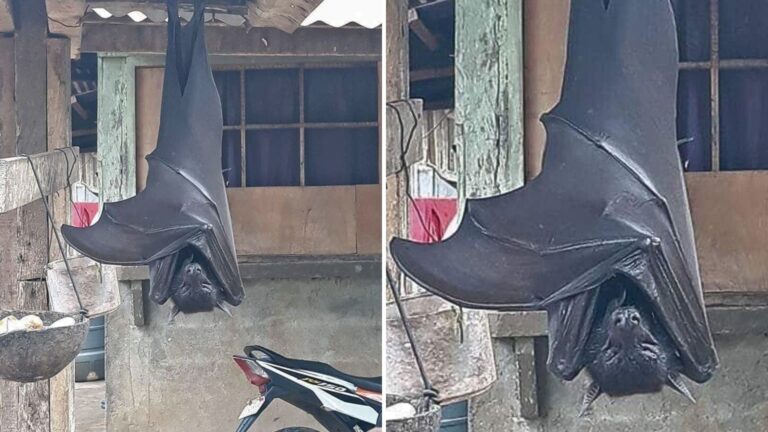Birds That Fly At Incredible Altitudes
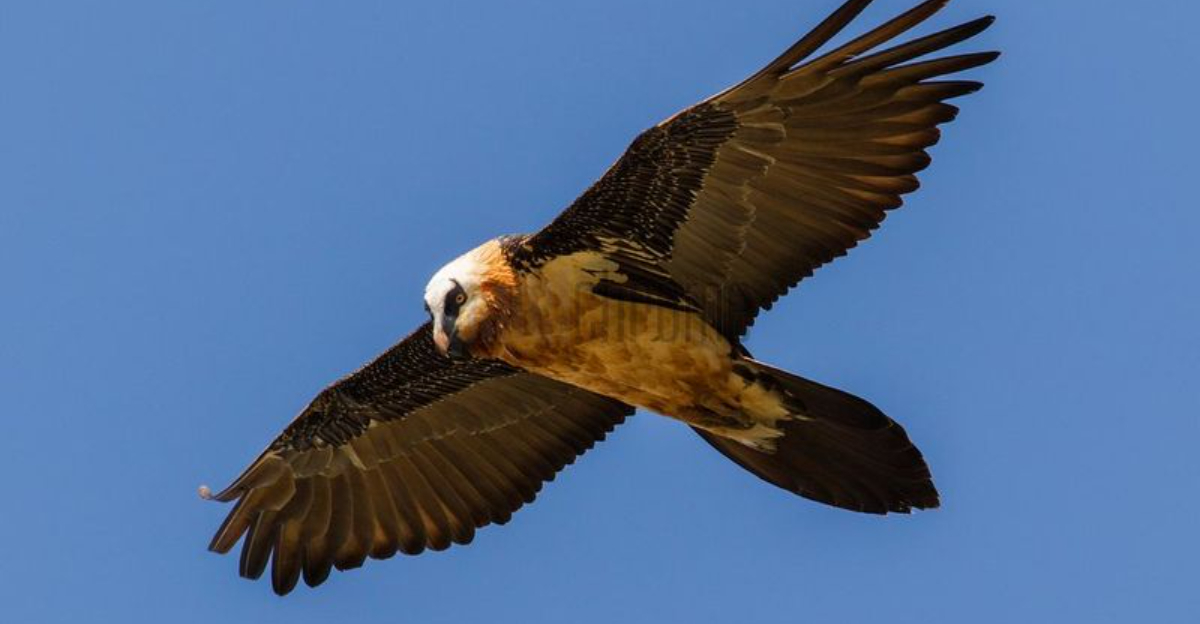
Birds are nature’s ultimate aerial masters, with some species capable of flying at altitudes that would leave humans gasping for oxygen. These high-flying champions navigate thin air where temperatures plummet and oxygen is scarce.
From crossing the Himalayas to riding thermal currents miles above Earth, these feathered altitude specialists demonstrate remarkable physiological adaptations that allow them to soar where few living creatures can survive.
1. Rüppell’s Griffon Vulture
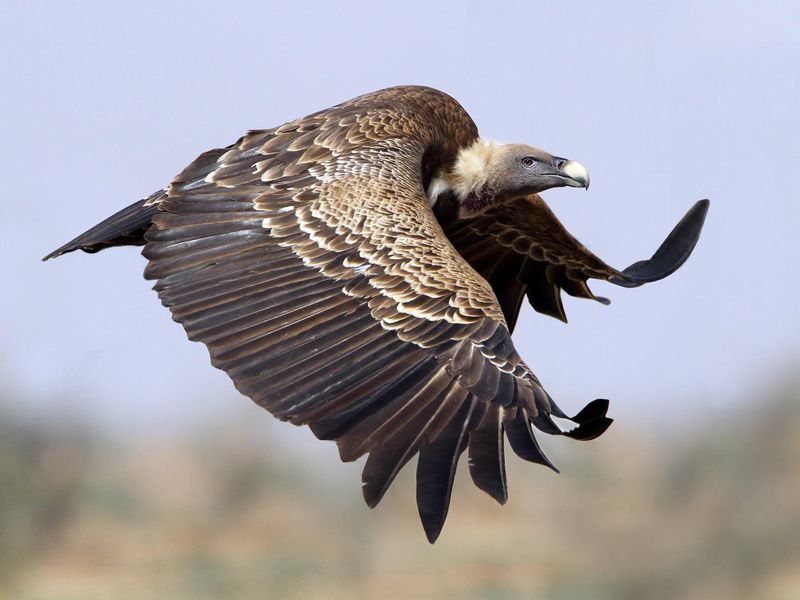
Hold your breath! These record-breakers have been spotted at a jaw-dropping 37,000 feet – higher than commercial airplanes! A Rüppell’s Griffon once collided with a jet over Africa, providing shocking evidence of their extraordinary ceiling.
Special hemoglobin in their blood binds oxygen more efficiently than other birds, allowing survival where humans would pass out in minutes.
2. Bar-Headed Goose
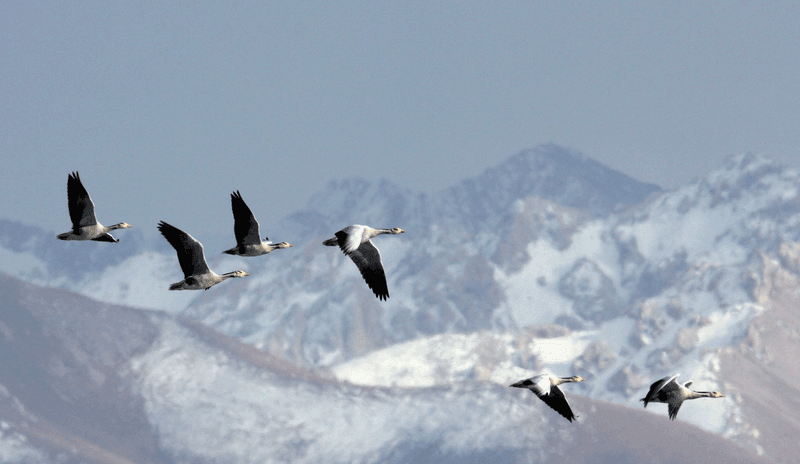
Twice a year, these mountain marathoners cross the Himalayas at heights exceeding 29,000 feet – that’s Everest territory! Their lungs extract oxygen with remarkable efficiency, even in the thinnest air imaginable.
Unlike most migrants that fly around mountains, these bold travelers take the direct route over the world’s highest peaks, saving time but facing brutal conditions and oxygen levels just 10% of sea level.
3. Common Crane
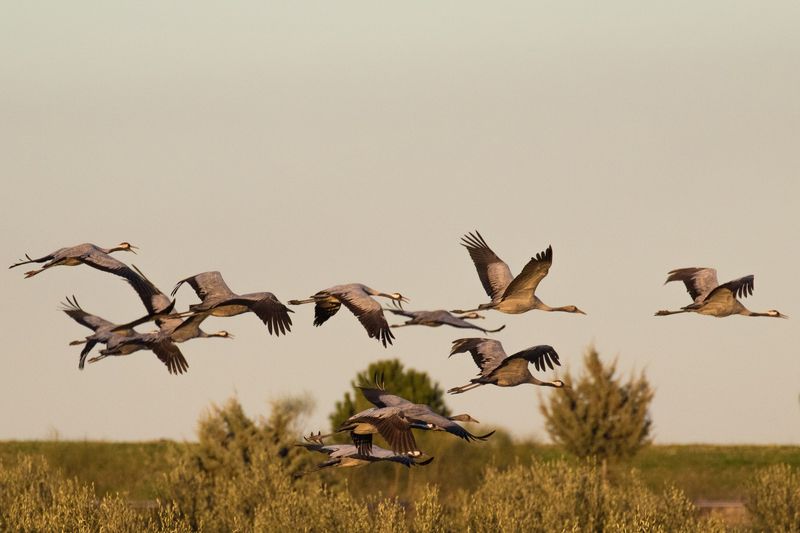
Radar has tracked these elegant voyagers cruising comfortably at 33,000 feet during migration! Their specialized respiratory system allows them to extract maximum oxygen from each breath while flying over the Himalayas.
Flocks form perfect V-formations, creating aerodynamic advantages that help conserve energy during these extreme altitude journeys. Their bodies undergo seasonal adaptations, including increased red blood cell production before migration begins.
4. Alpine Chough
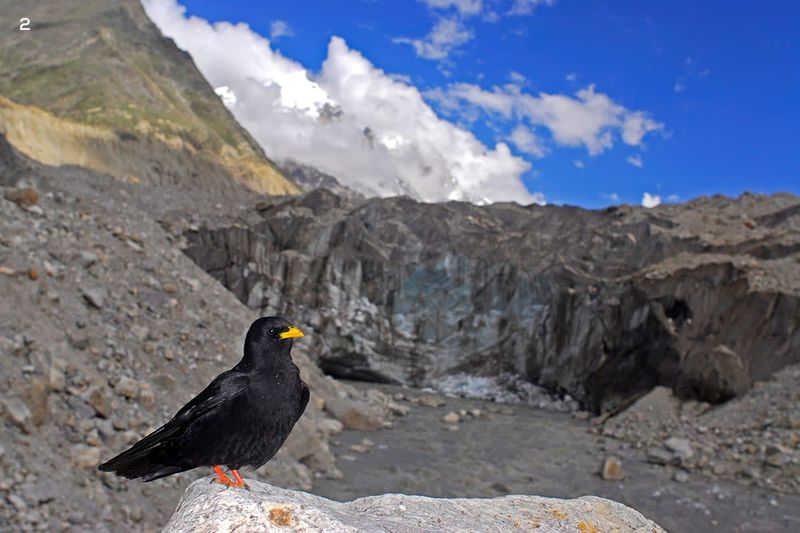
Mountain daredevils to the core! These glossy black corvids nest higher than any other bird – establishing homes at elevations up to 21,300 feet in the Himalayas. Their acrobatic flight maneuvers delight mountaineers tackling the world’s highest peaks.
Adaptations include larger hearts relative to body size and enhanced oxygen-carrying capacity. They’ve been spotted playing in updrafts near Everest’s summit, seemingly unfazed by conditions that threaten human survival.
5. Whooper Swan

Surprising altitude champions! Despite weighing up to 14 pounds, these massive waterfowl have been recorded flying at 27,000 feet during migration between Iceland and the British Isles.
Their powerful flight muscles and specialized respiratory system enable these unexpected high-flyers to maintain efficient oxygen use. Imagine spotting a creature with a 7-foot wingspan soaring higher than most small aircraft can reach!
6. Bearded Vulture

Floating like ghosts above 24,000 feet, these bone-eating specialists patrol the highest reaches of European and Asian mountain ranges. Their massive 9-foot wingspans create enough lift to ride mountain updrafts with barely a wingbeat.
Unlike other vultures, they’ve evolved to digest bone marrow, dropping large bones from great heights to crack them open. Their blood contains specialized hemoglobin that functions efficiently even in oxygen-poor environments.
7. White Stork
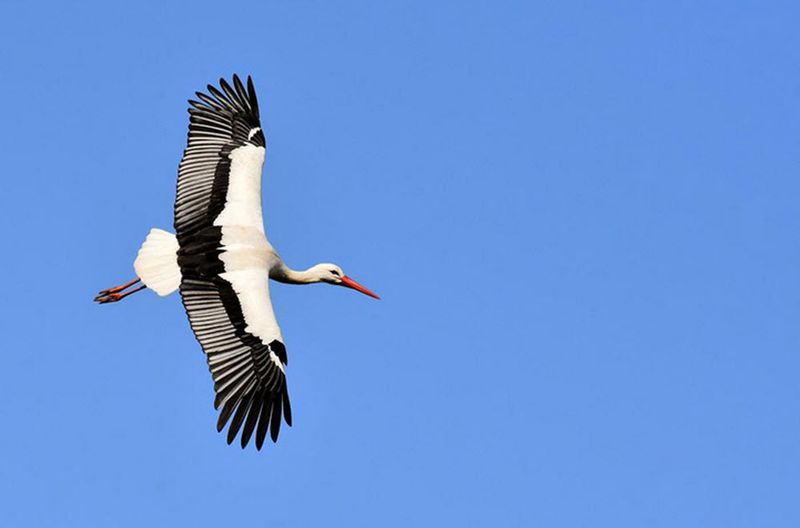
Riding invisible elevators! These iconic birds use thermal columns to spiral upward to 16,000 feet during migrations between Europe and Africa. Their black wingtips create perfect contrast against blue skies, making them visible to amazed observers below.
Storks conserve energy by barely flapping once they catch a thermal, gliding between rising air columns. Their specialized air sacs and efficient lungs extract maximum oxygen even as atmospheric pressure drops dramatically.
8. Andean Condor

Mountain kings with 10-foot wingspans! These massive birds effortlessly patrol the Andes at 18,000 feet. Their specialized wing design creates maximum lift with minimal energy expenditure in the thin mountain air.
Condors can soar for hours without a single wing flap, riding mountain updrafts with supreme efficiency. Their blood contains unique hemoglobin variants that maintain oxygen-carrying capacity despite the elevation’s reduced atmospheric pressure.
9. Mallard Duck
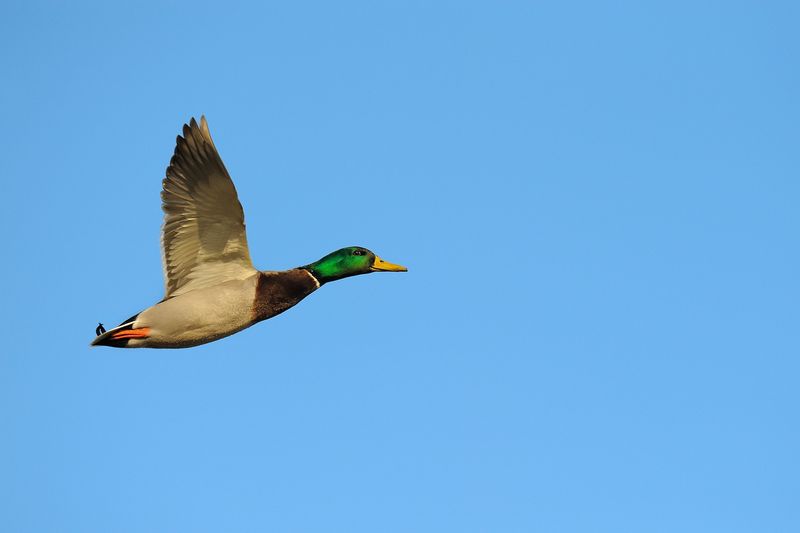
Surprise high-flyers! These common pond dwellers transform into altitude specialists during migration, reaching astonishing heights of 21,000 feet. A mallard was once sucked into a jet engine at this elevation, shocking aviation experts.
Their remarkable ability to withstand extreme cold and low oxygen tensions makes these seemingly ordinary birds extraordinary aerial athletes. Special air sacs throughout their bodies ensure oxygen reaches muscles even in thin atmosphere.
10. Eurasian Skylark
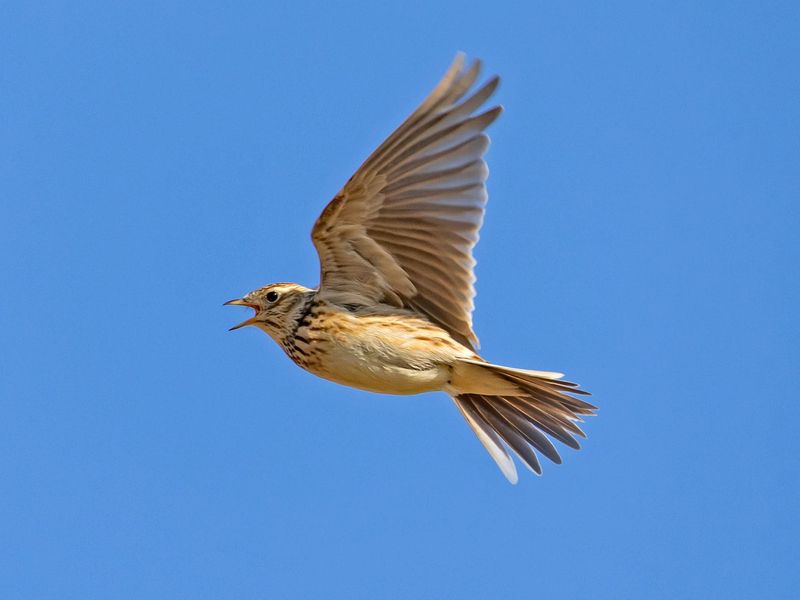
Singing in the stratosphere! These small songbirds perform aerial concerts at heights up to 6,000 feet, hovering in place while delivering complex melodies that cascade down to listeners below.
Their aerial displays can last 30 minutes, requiring incredible stamina and oxygen efficiency. What makes this feat even more impressive is their tiny size – barely 7 inches long! Special adaptations include larger-than-expected lungs and heart for their diminutive bodies.
11. Great Frigatebird
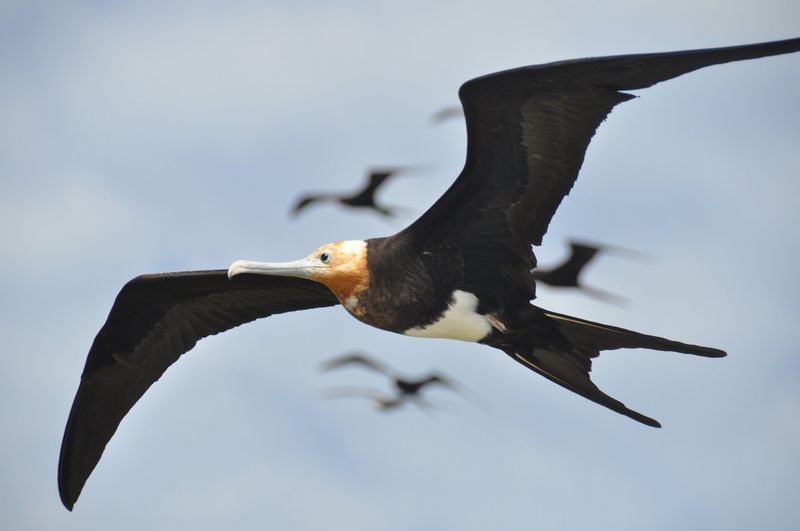
Ocean marathoners that never land! These remarkable seabirds can stay aloft for up to two months straight, reaching heights of 13,000 feet while hunting and sleeping on the wing. Their wingspan-to-weight ratio is among the highest of any bird.
Unlike most high-flyers that battle mountain conditions, frigatebirds master oceanic thermals. They can sleep during flight, shutting down half their brain while the other half keeps them airborne.
12. Alpine Swift
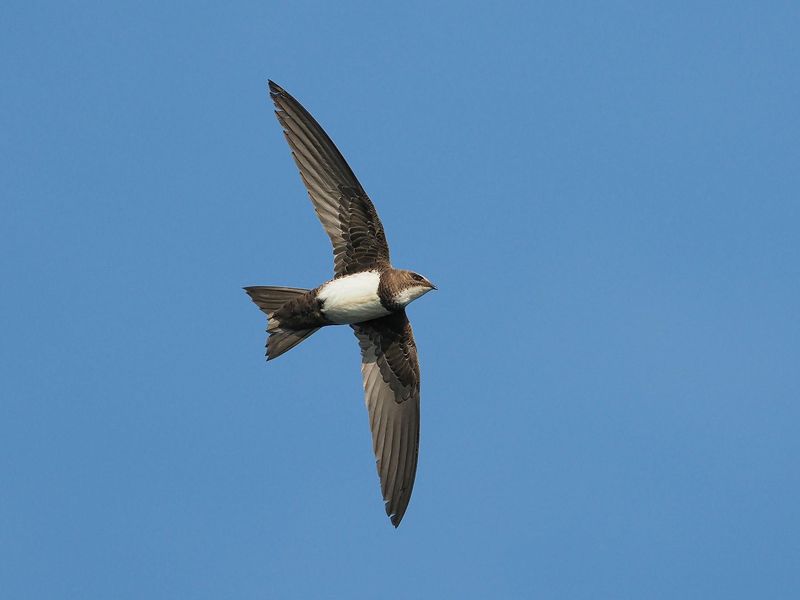
Non-stop flyers extraordinaire! These aerial speedsters stay airborne for up to 200 consecutive days, reaching altitudes of 13,000 feet while hunting insects. Their crescent-shaped wings slice through thin air with remarkable efficiency.
Even more amazing? They sleep while flying, entering brief periods of unconsciousness. Their specialized lung structure extracts maximum oxygen from each breath, allowing them to maintain high metabolic rates despite the altitude’s challenges.
13. White-Tailed Eagle

Flying giants that defy gravity! Despite weighing up to 15 pounds with 8-foot wingspans, these massive raptors have been recorded soaring at 10,000 feet. Their primary feathers spread like fingers, creating slots that reduce turbulence.
Special adaptations include enhanced oxygen-carrying capacity in their blood and larger-than-expected hearts. When diving from these heights, they can reach speeds over 100 mph, making them aerial predators without equal.
14. Demoiselle Crane

Himalayan conquerors in miniature! Despite being the smallest crane species, these determined birds fly over the world’s highest mountains at 26,000 feet during migration. Their elegant gray plumage and black neck markings create striking silhouettes against snow-capped peaks.
Specialized air sacs connect to their lungs, allowing them to extract oxygen with extraordinary efficiency. They’ve evolved larger hearts relative to body size compared to lowland birds.





